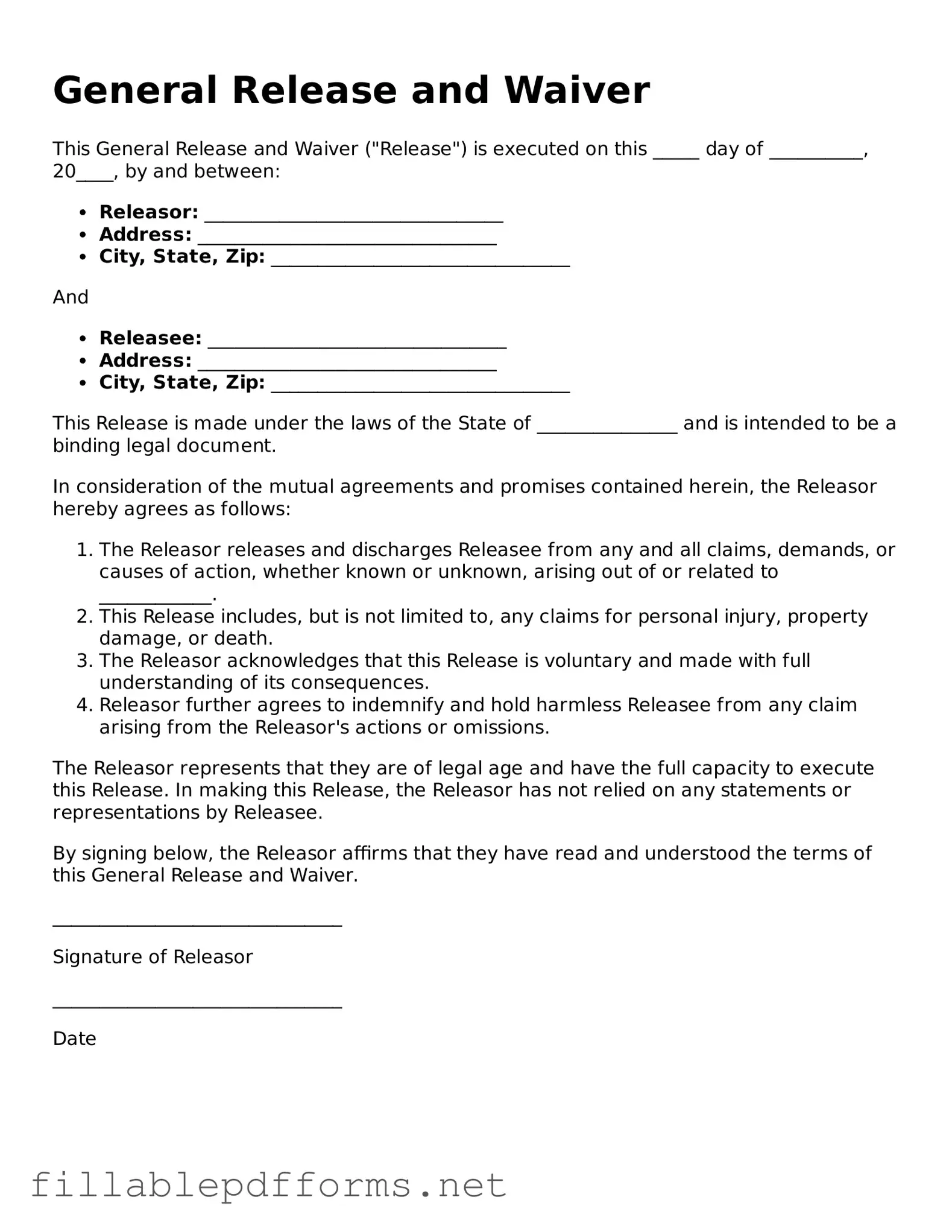Blank General Release and Waiver Template
The General Release and Waiver form is a legal document that allows one party to relinquish their right to pursue claims against another party. By signing this form, individuals acknowledge that they are releasing the other party from any future liabilities. Understanding this form is essential for anyone looking to protect themselves while engaging in various activities or agreements.
Launch Editor Here
